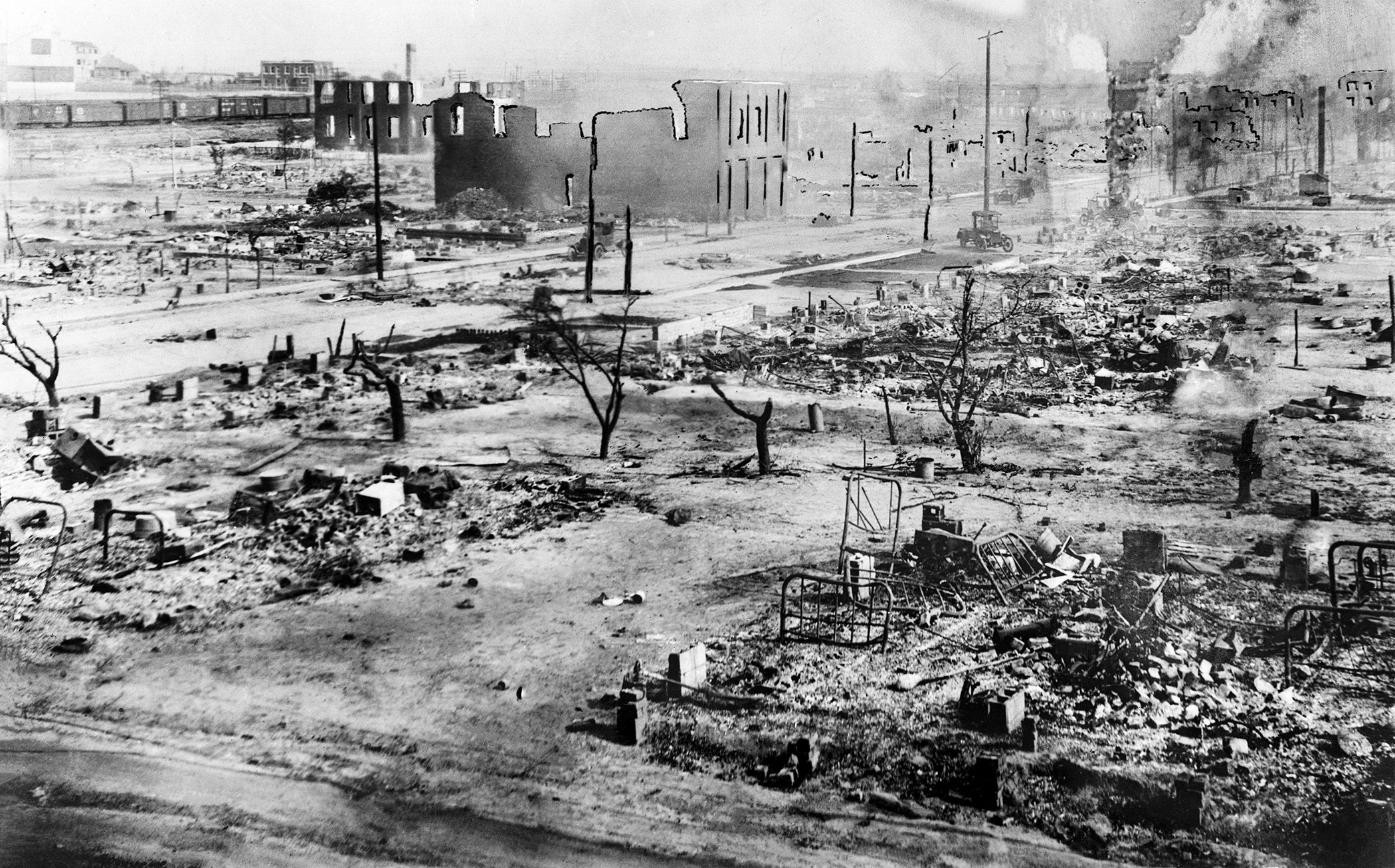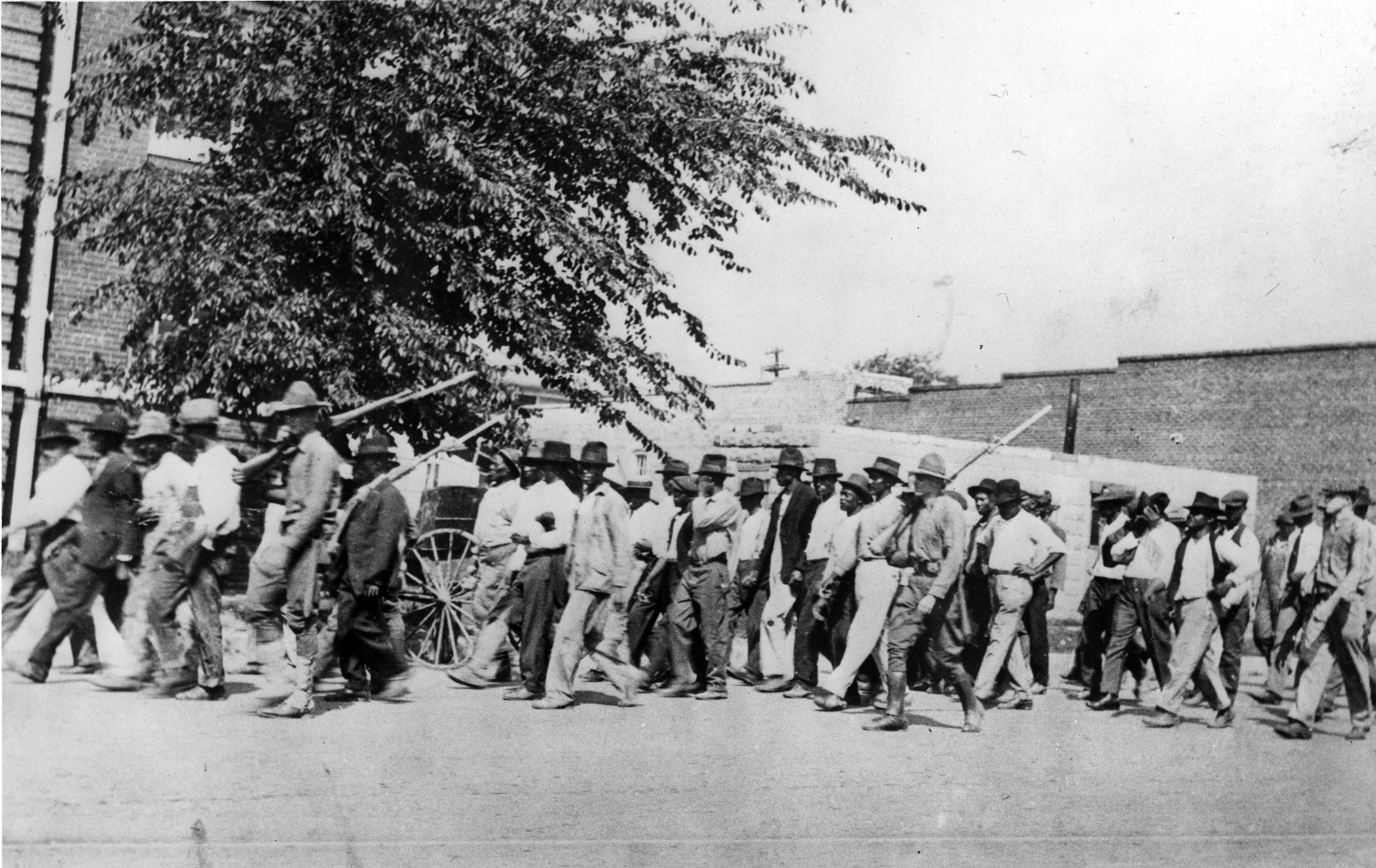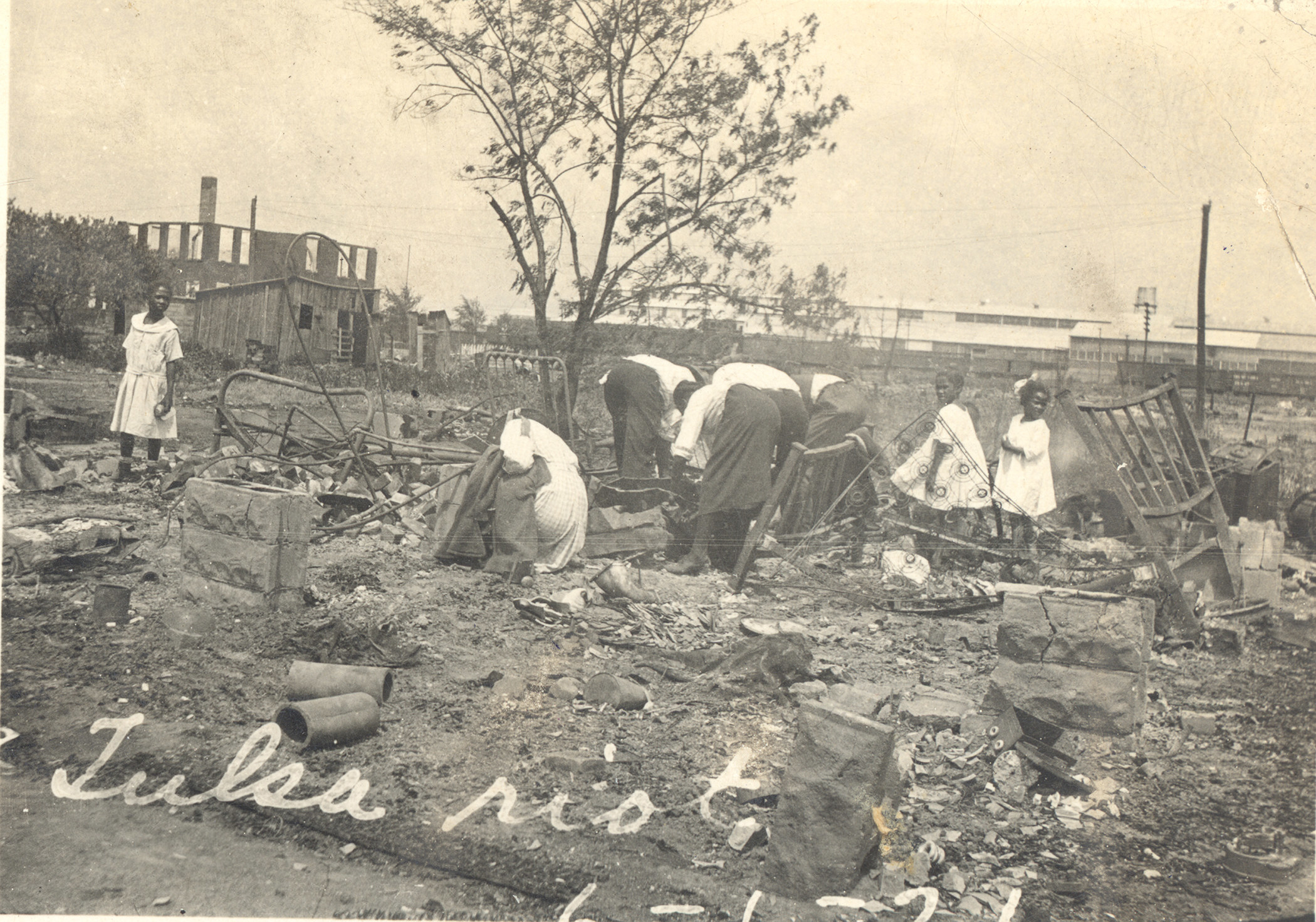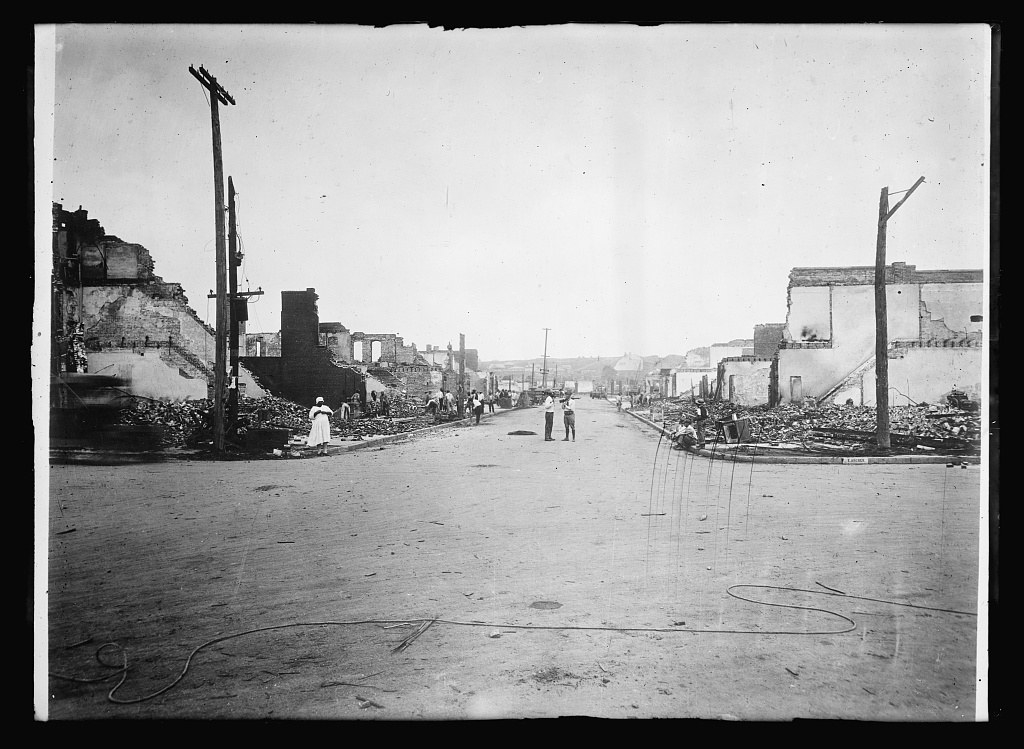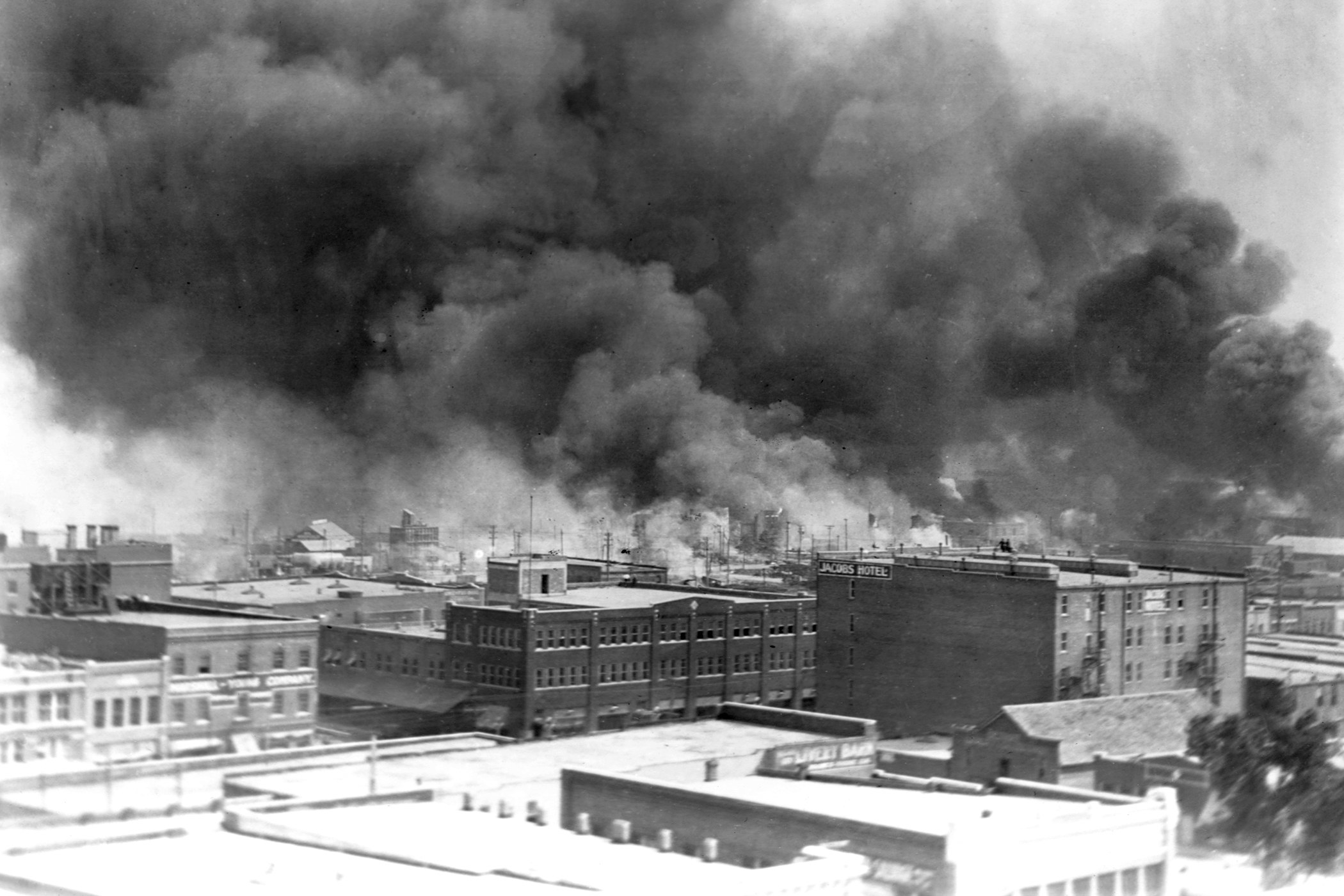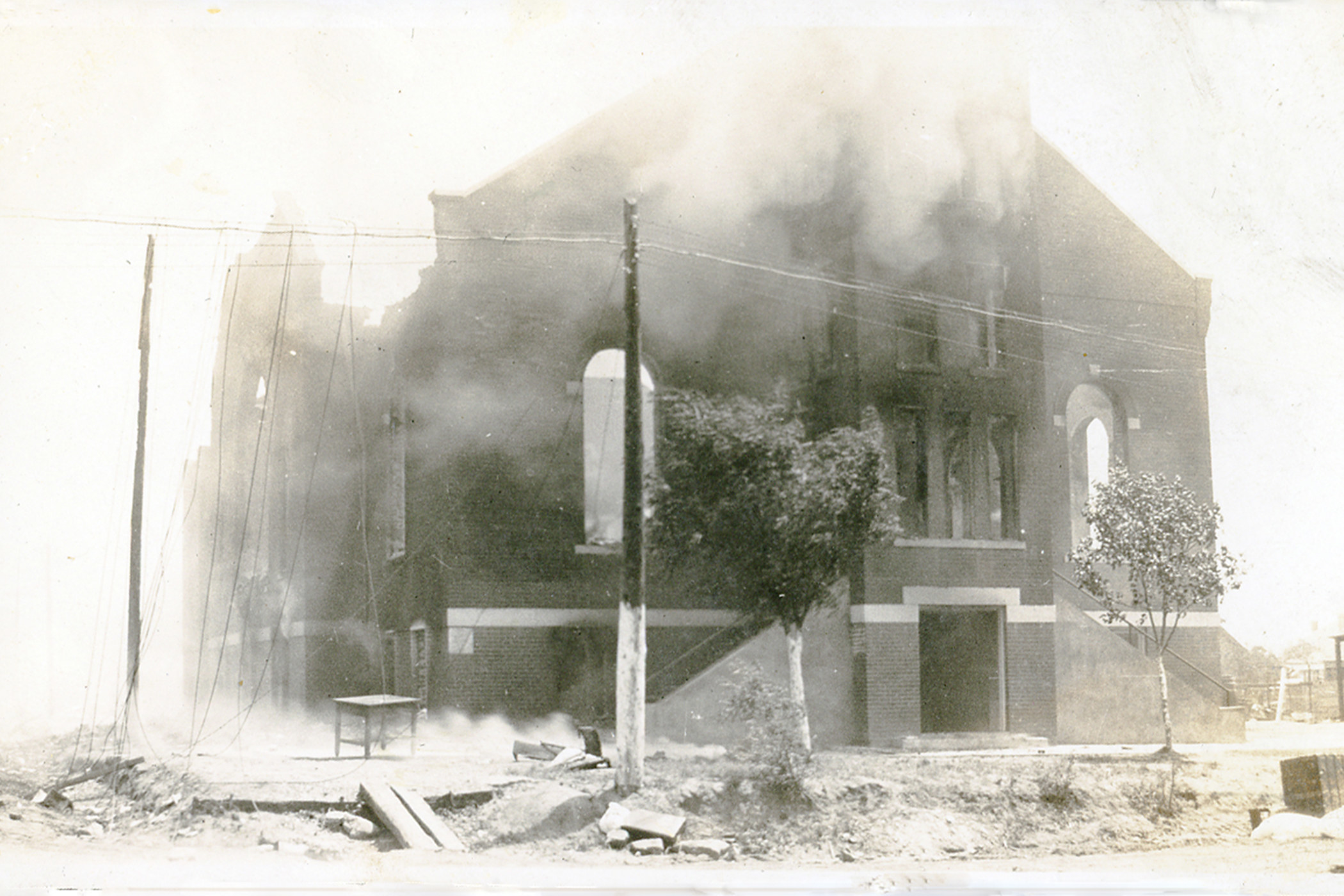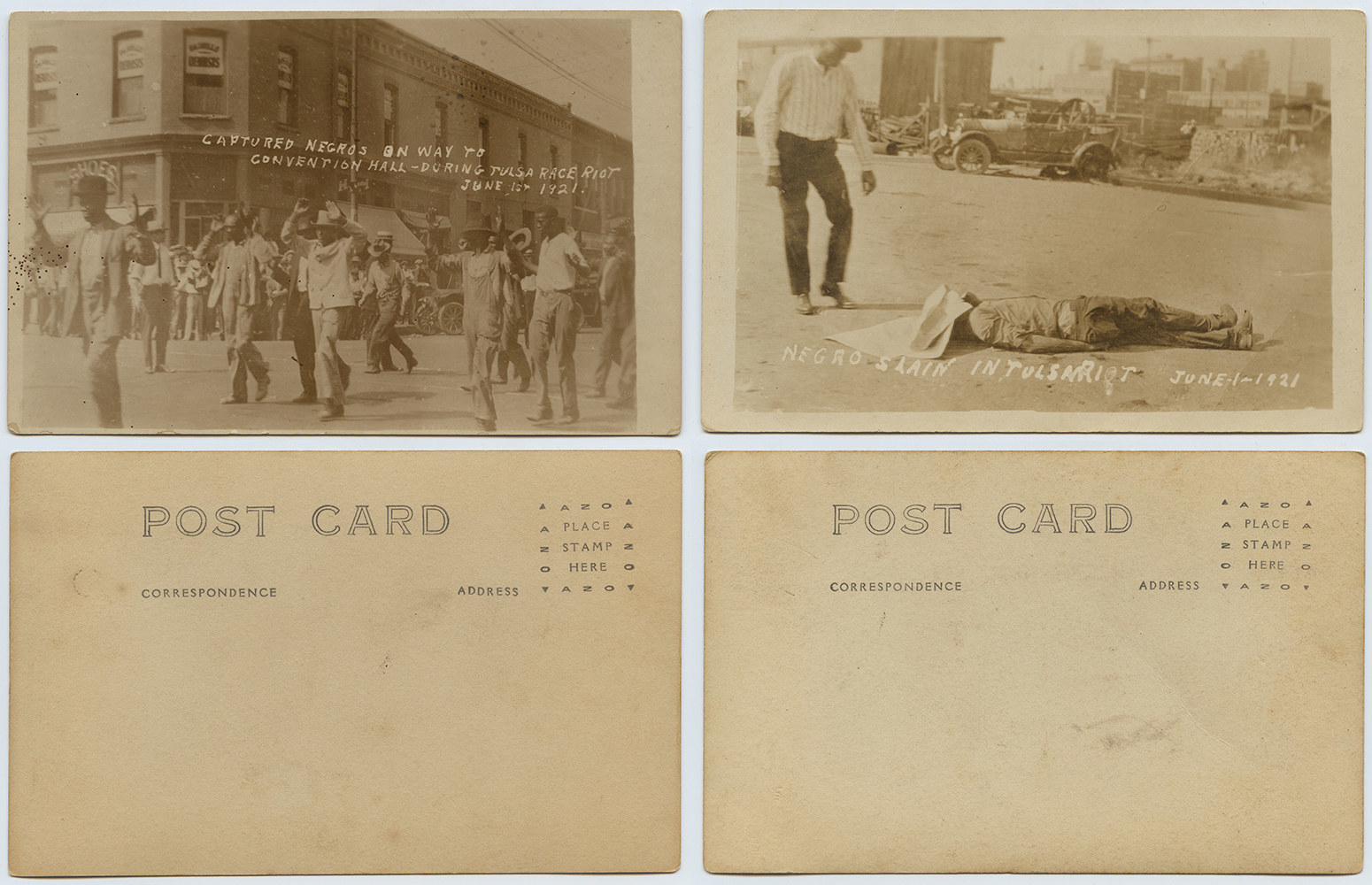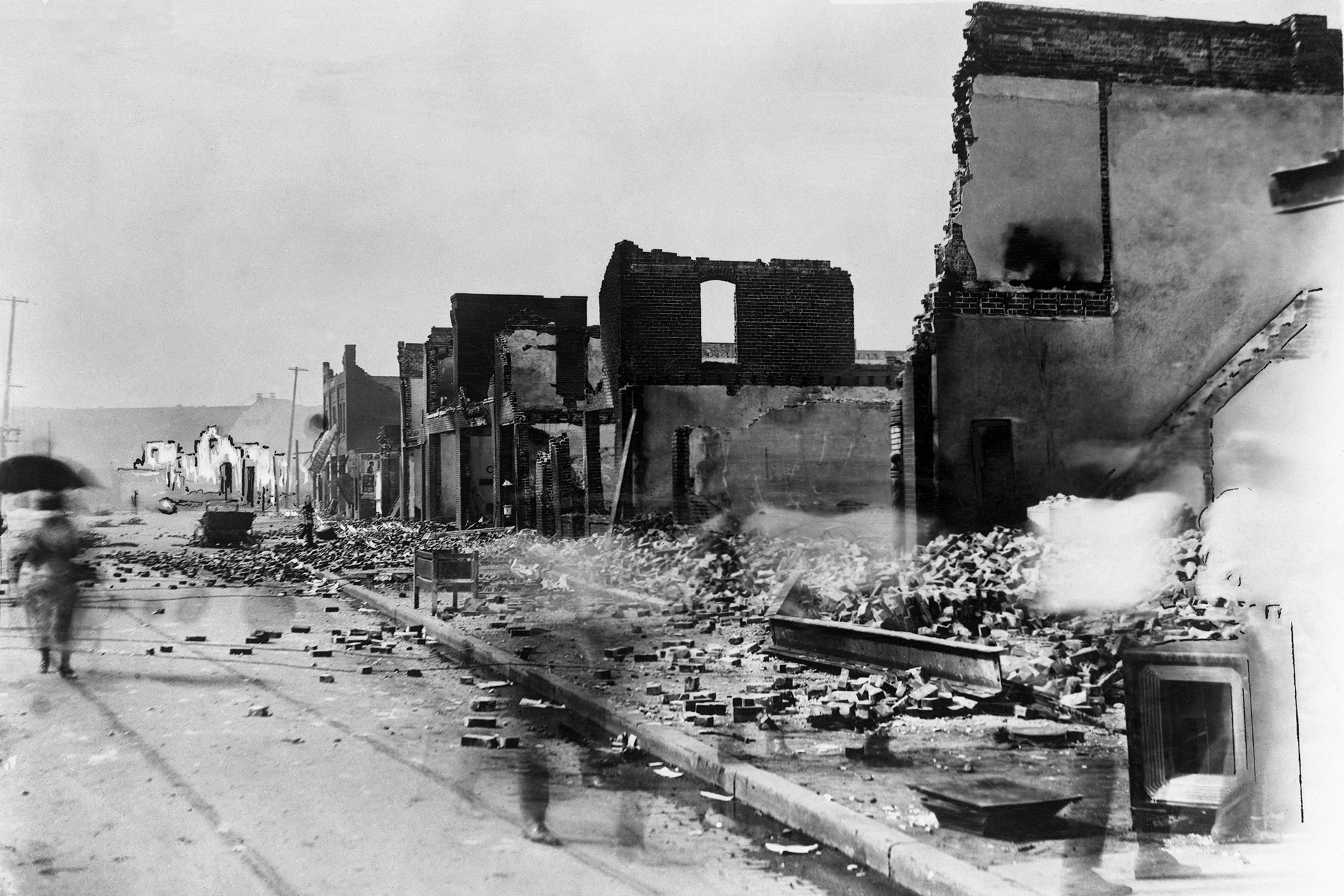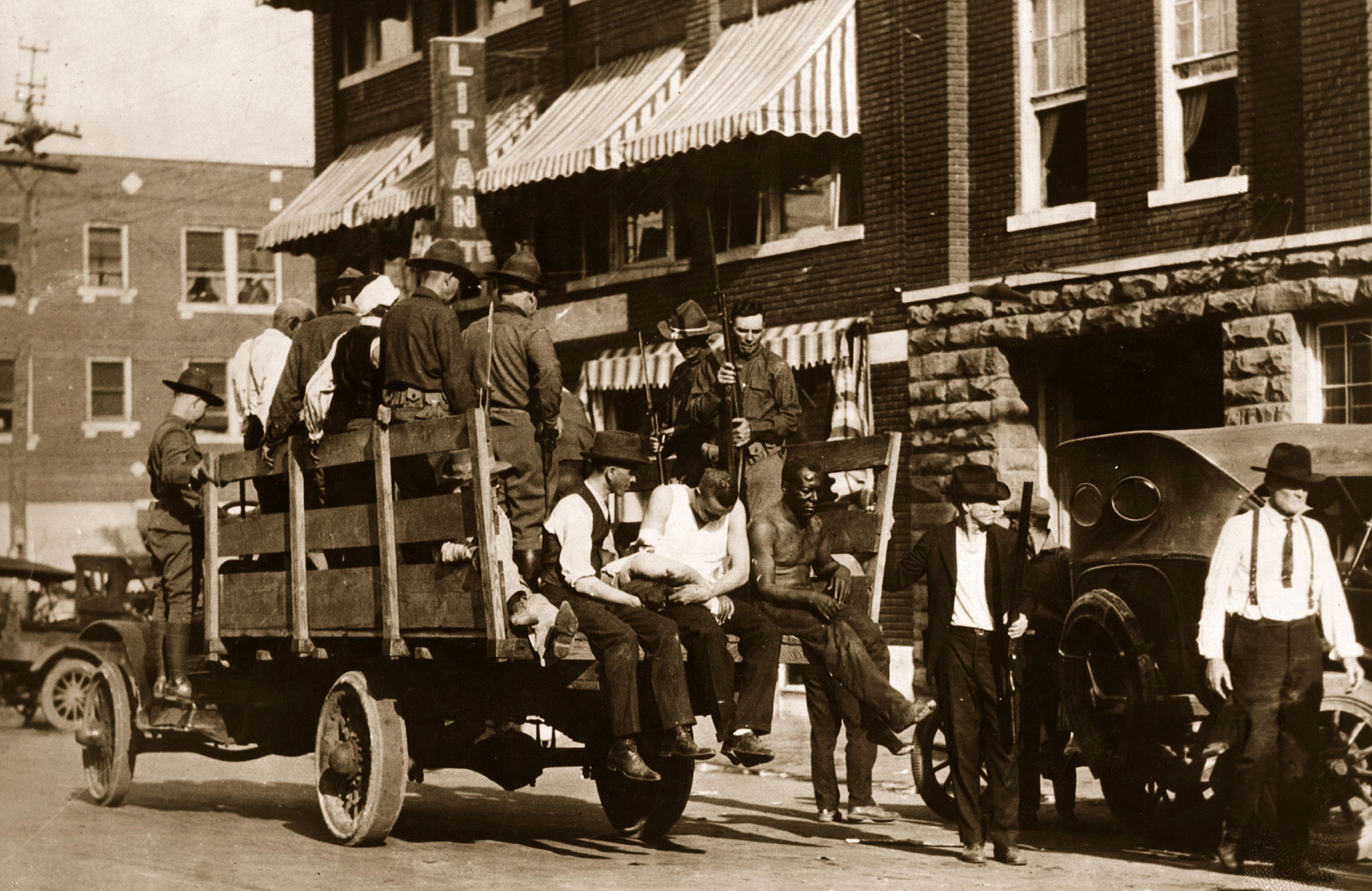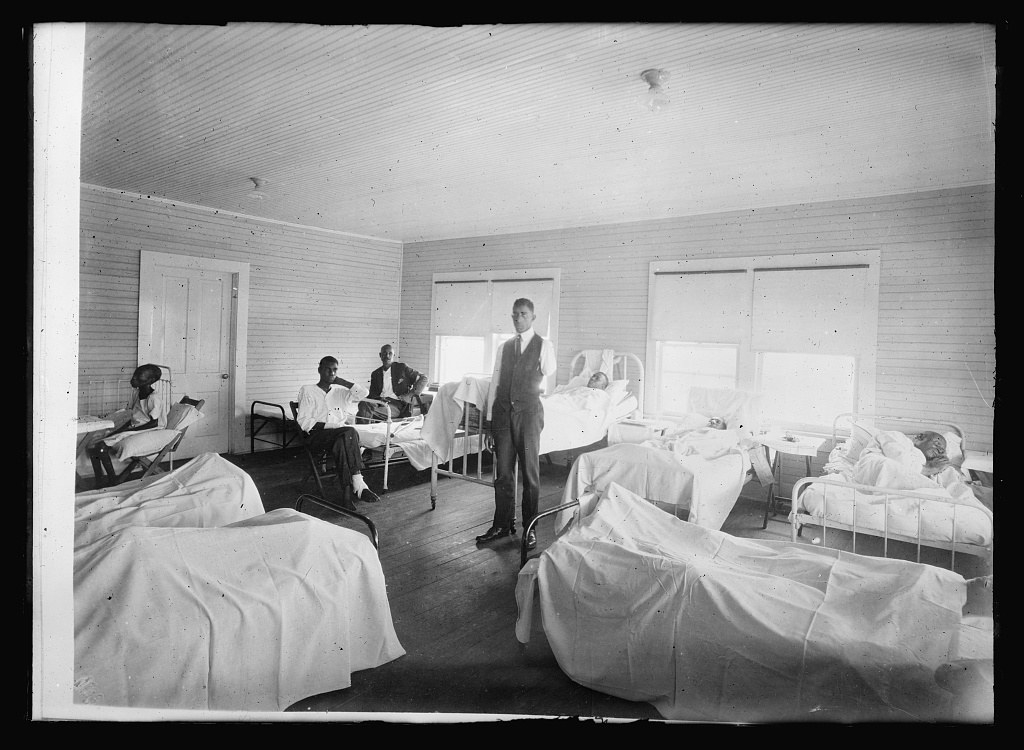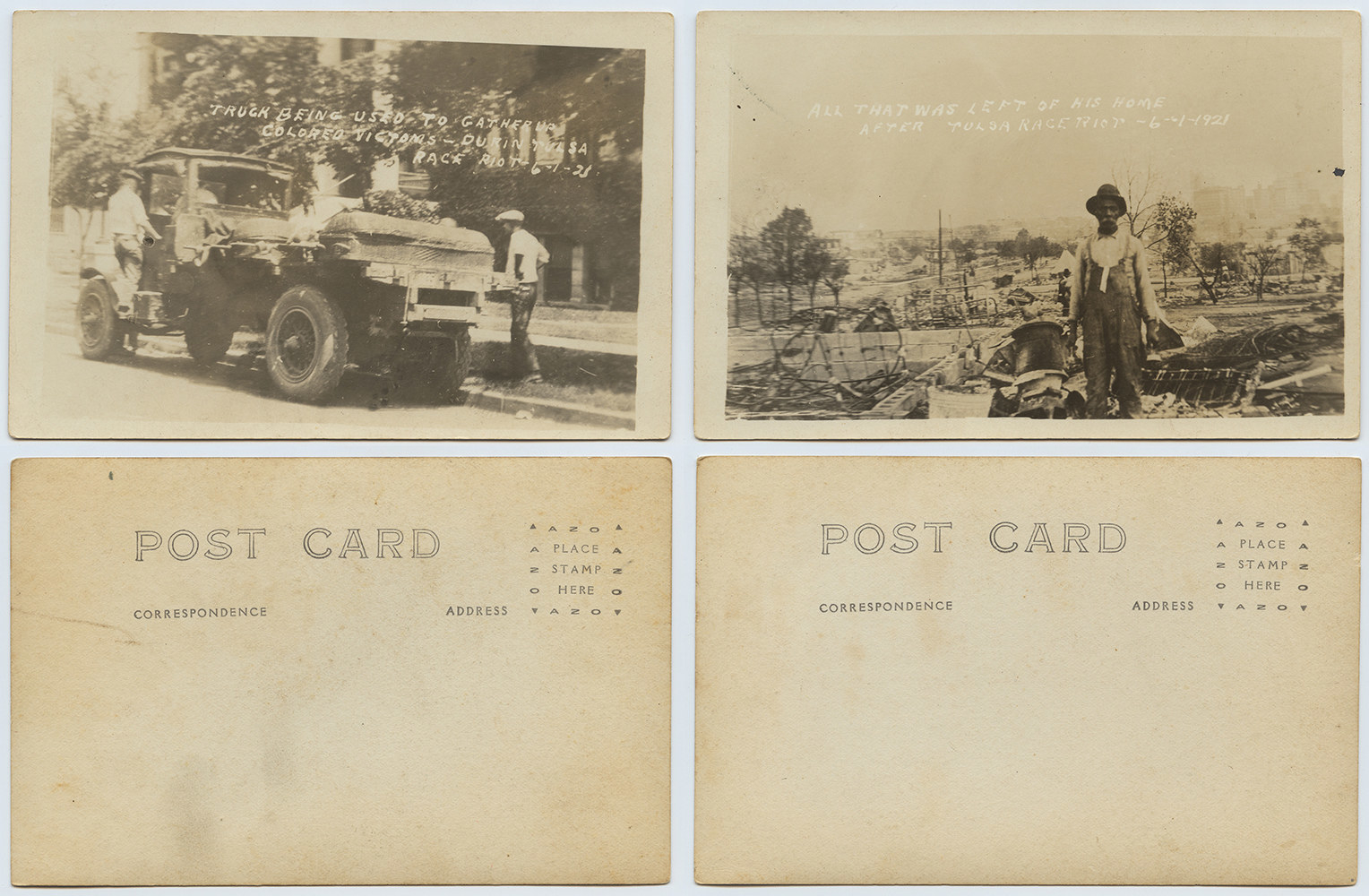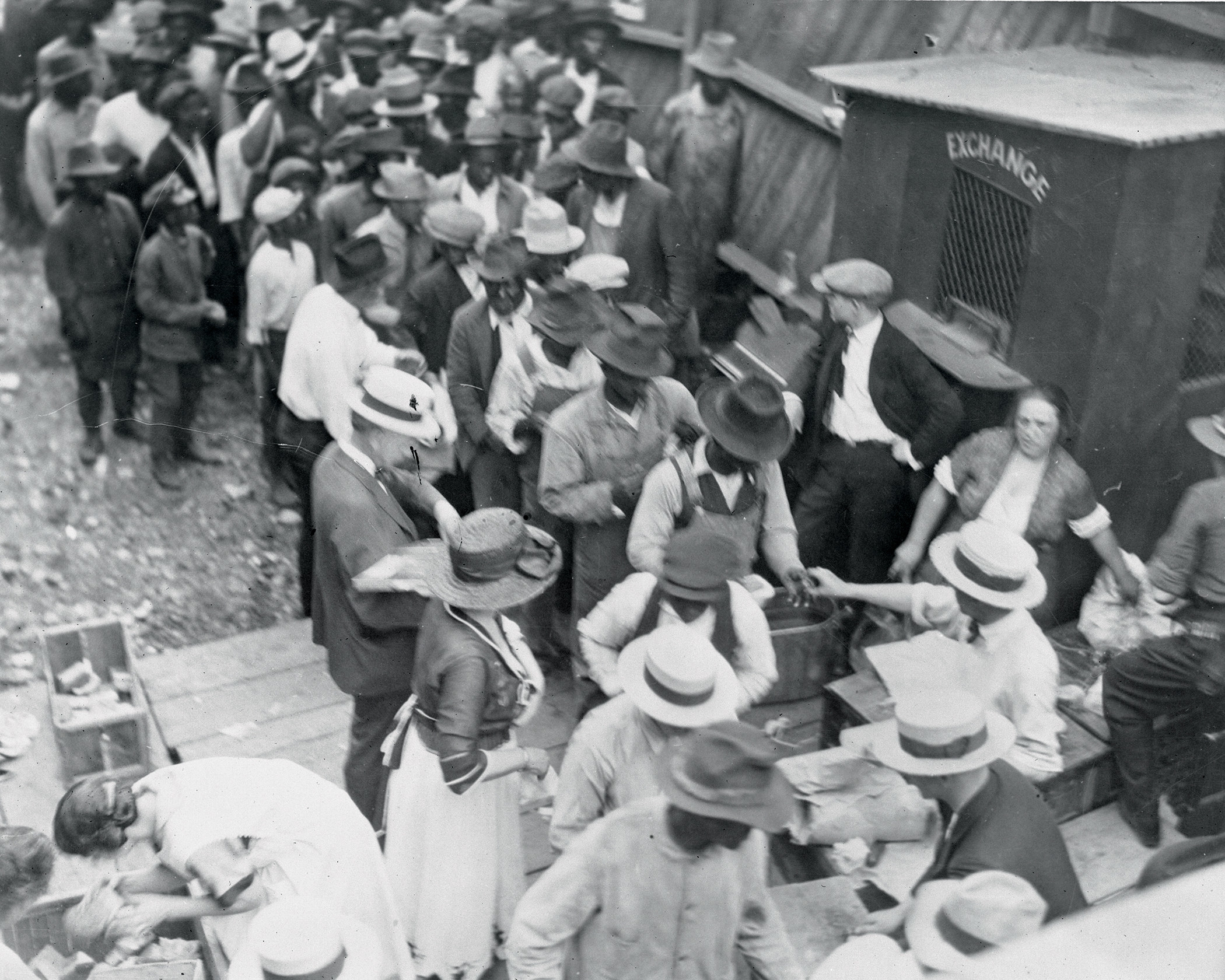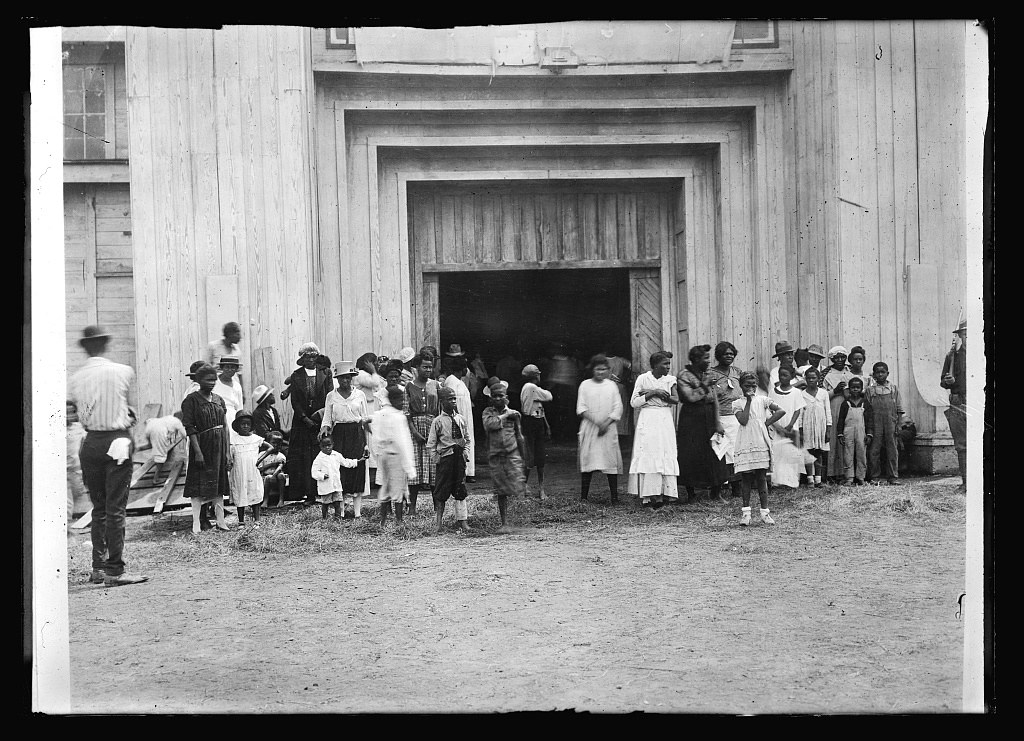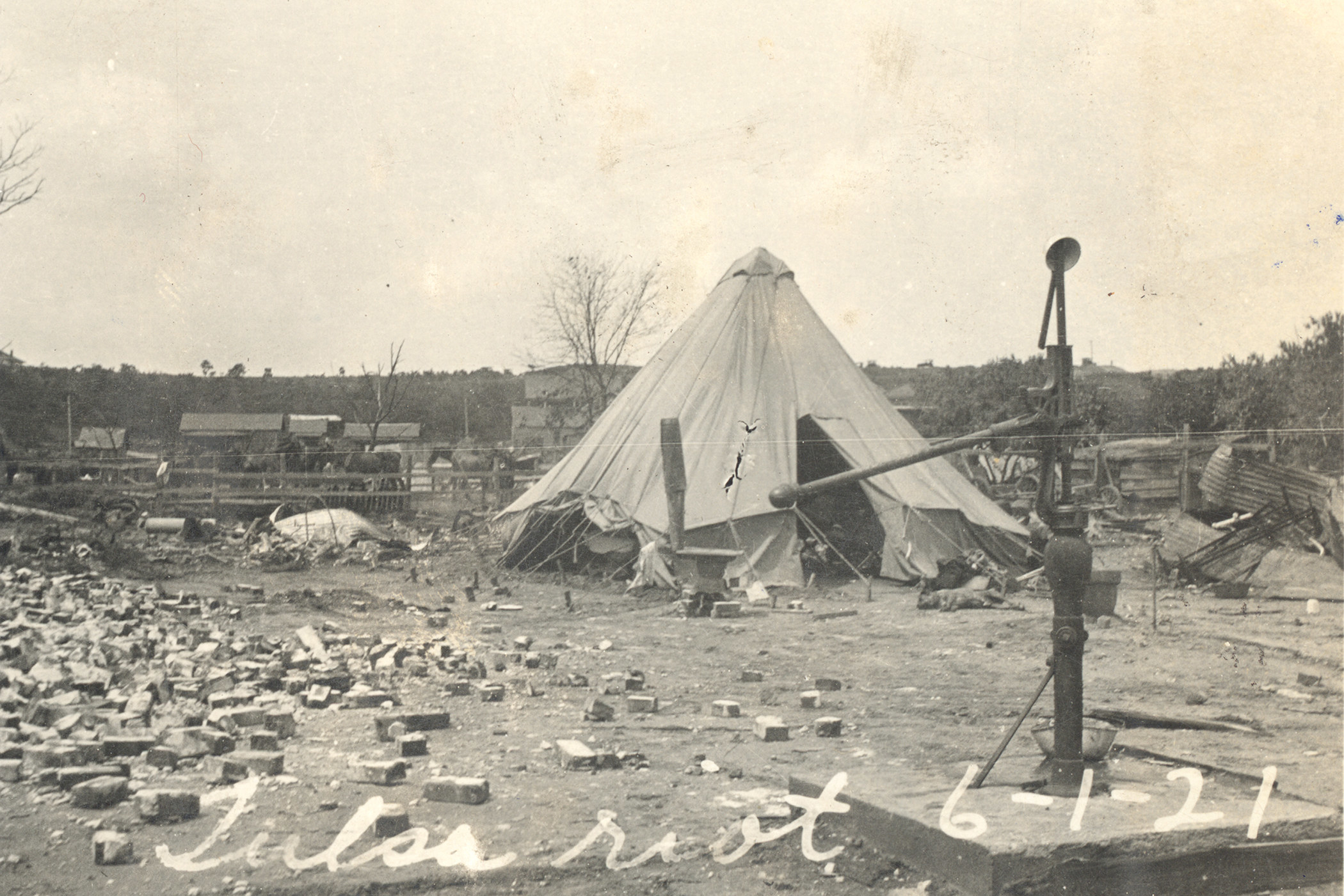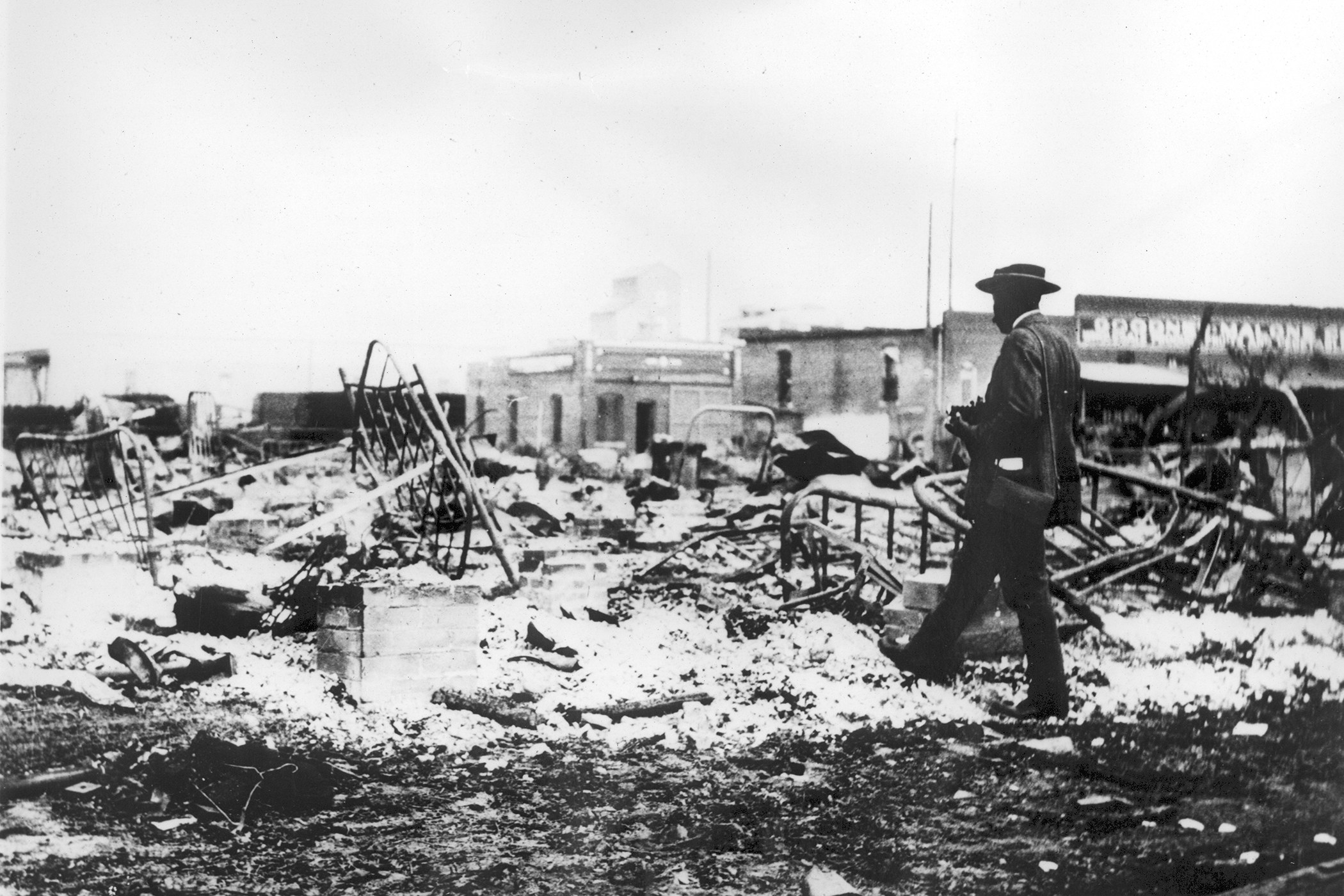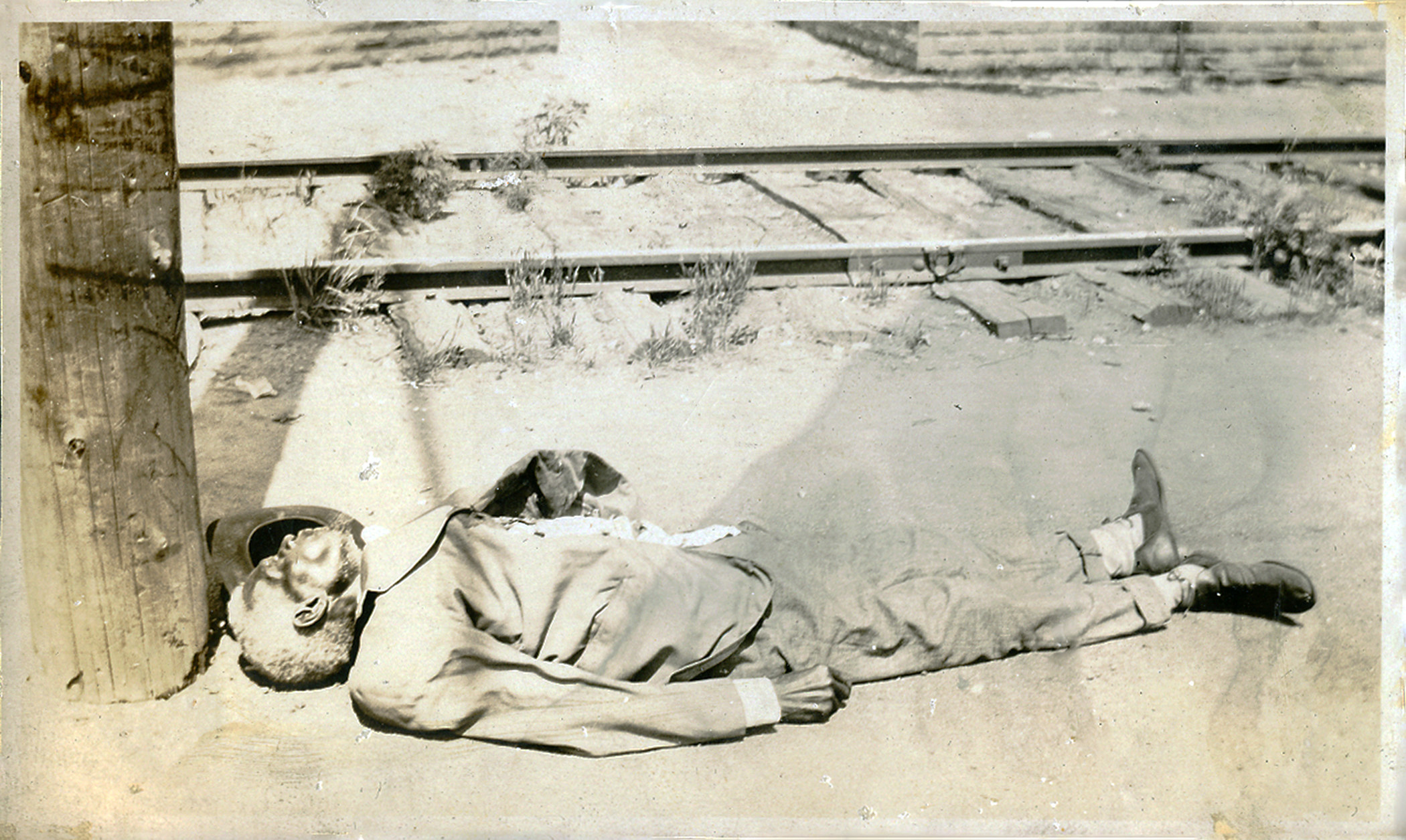
Sign up for the BuzzFeed News newsletter JPG for behind-the-scenes exclusives from renowned photographers and our hard-hitting photo stories.
Following World War I, the Greenwood District of Tulsa, Oklahoma, was a mecca for Black entrepreneurship and home to a vibrant community of upper- and middle-class Black families who embodied the optimism of the American dream. With the city of Tulsa thoroughly segregated, the central hub of the Greenwood District became known as “Black Wall Street” for its economic strength and influence. Black-owned businesses, banks, and schools ensured that the local economy was not only thriving, but was also reflective of the community in which they served. Similar to the Harlem Renaissance concurrently unfolding on the East Coast, Tulsa's Black Wall Street brought forth the promise of a brighter tomorrow and offered a roadmap for what success could look like for Black communities in the 20th century.
In the early hours of June 1, 1921, white rioters set fire to the Greenwood District, looting businesses and killing as many as 300 Black residents, leaving thousands more without shelter. Days earlier, a 19-year-old Black shoeshine named Dick Rowland was accused by a white store clerk of sexually assaulting a white, 17-year-old elevator operator named Sarah Page. In only a matter of hours, the promise and glory of Black Wall Street had been reduced to ashes. It was later determined by police that Rowland had accidentally stumbled into the elevator and had only grabbed the attendant's arm to avoid falling.
But the damage had already been done. News of the alleged assault spread across white communities in Tulsa, inciting racially motivated violence across the city. According to a 2001 report by Tulsa officials titled Race Riot Commission Report, "At the eruption of violence, civil officials selected many men, all of them white and some of them participants in that violence, and made those men their agents as deputies." Under the watch of these newly ordained police officers, white mobs proceeded to torch the Greenwood District, stealing valuables and killing all those who resisted. The report goes on, "Not one of these criminal acts was then or ever has been prosecuted or punished by government at any level: municipal, county, state, or federal."
For nearly a century, these events would often be described as the Tulsa Race Riots, although this name does not accurately account for the mass murder and destruction of property inflicted upon an entire community of Black citizens. In recent years, many are looking to the Tulsa massacre with renewed perspective on the legacy of racially motivated hate in the US. The massacre was once again placed in the forefront of the national conversation on race when President Donald Trump scheduled a campaign rally in Tulsa on the June 19 holiday of Juneteenth, which commemorates the end of slavery in the US. The president has since rescheduled his rally for the following day.
These pictures capture the horrific aftermath of one of the worst racially motivated attacks on Black people in US history.
